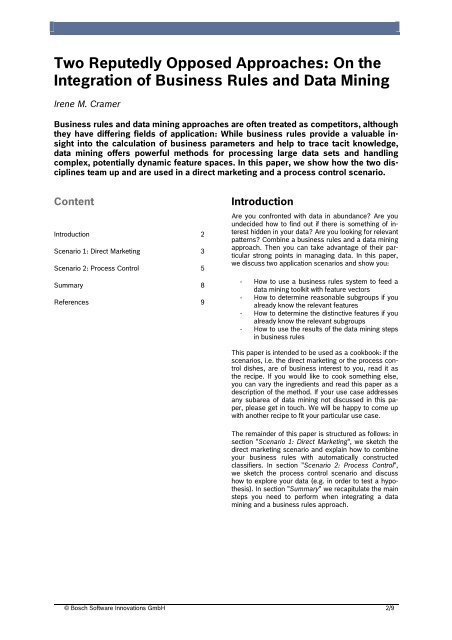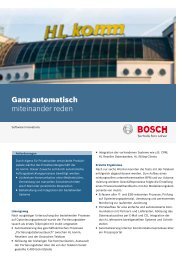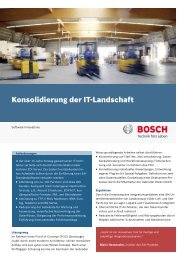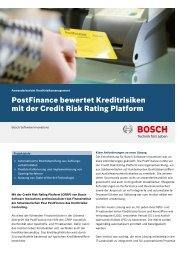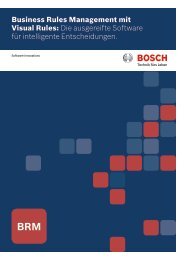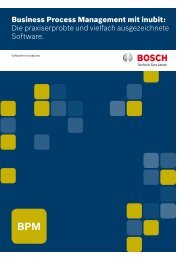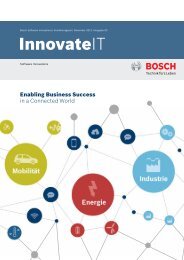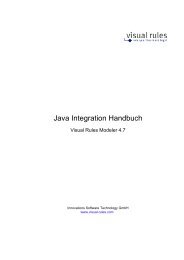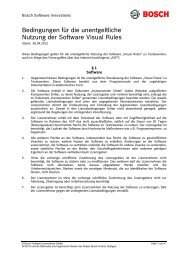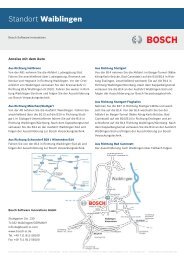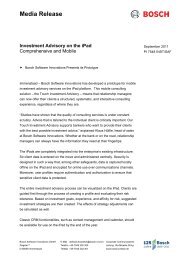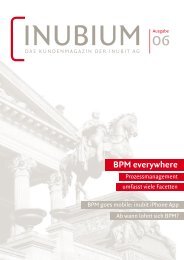Two Reputedly Opposed Approaches: On the Integration of ...
Two Reputedly Opposed Approaches: On the Integration of ...
Two Reputedly Opposed Approaches: On the Integration of ...
You also want an ePaper? Increase the reach of your titles
YUMPU automatically turns print PDFs into web optimized ePapers that Google loves.
<strong>Two</strong> <strong>Reputedly</strong> <strong>Opposed</strong> <strong>Approaches</strong>: <strong>On</strong> <strong>the</strong><br />
<strong>Integration</strong> <strong>of</strong> Business Rules and Data Mining<br />
Irene M. Cramer<br />
Business rules and data mining approaches are <strong>of</strong>ten treated as competitors, although<br />
<strong>the</strong>y have differing fields <strong>of</strong> application: While business rules provide a valuable insight<br />
into <strong>the</strong> calculation <strong>of</strong> business parameters and help to trace tacit knowledge,<br />
data mining <strong>of</strong>fers powerful methods for processing large data sets and handling<br />
complex, potentially dynamic feature spaces. In this paper, we show how <strong>the</strong> two disciplines<br />
team up and are used in a direct marketing and a process control scenario.<br />
Content<br />
Introduction<br />
Scenario 1: Direct Marketing<br />
Scenario 2: Process Control<br />
Summary<br />
References<br />
2<br />
3<br />
5<br />
8<br />
9<br />
Introduction<br />
Are you confronted with data in abundance? Are you<br />
undecided how to find out if <strong>the</strong>re is something <strong>of</strong> interest<br />
hidden in your data? Are you looking for relevant<br />
patterns? Combine a business rules and a data mining<br />
approach. Then you can take advantage <strong>of</strong> <strong>the</strong>ir particular<br />
strong points in managing data. In this paper,<br />
we discuss two application scenarios and show you:<br />
- How to use a business rules system to feed a<br />
data mining toolkit with feature vectors<br />
- How to determine reasonable subgroups if you<br />
already know <strong>the</strong> relevant features<br />
- How to determine <strong>the</strong> distinctive features if you<br />
already know <strong>the</strong> relevant subgroups<br />
- How to use <strong>the</strong> results <strong>of</strong> <strong>the</strong> data mining steps<br />
in business rules<br />
This paper is intended to be used as a cookbook: if <strong>the</strong><br />
scenarios, i.e. <strong>the</strong> direct marketing or <strong>the</strong> process control<br />
dishes, are <strong>of</strong> business interest to you, read it as<br />
<strong>the</strong> recipe. If you would like to cook something else,<br />
you can vary <strong>the</strong> ingredients and read this paper as a<br />
description <strong>of</strong> <strong>the</strong> method. If your use case addresses<br />
any subarea <strong>of</strong> data mining not discussed in this paper,<br />
please get in touch. We will be happy to come up<br />
with ano<strong>the</strong>r recipe to fit your particular use case.<br />
The remainder <strong>of</strong> this paper is structured as follows: in<br />
section "Scenario 1: Direct Marketing", we sketch <strong>the</strong><br />
direct marketing scenario and explain how to combine<br />
your business rules with automatically constructed<br />
classifiers. In section "Scenario 2: Process Control",<br />
we sketch <strong>the</strong> process control scenario and discuss<br />
how to explore your data (e.g. in order to test a hypo<strong>the</strong>sis).<br />
In section "Summary" we recapitulate <strong>the</strong> main<br />
steps you need to perform when integrating a data<br />
mining and a business rules approach.<br />
© Bosch S<strong>of</strong>tware Innovations GmbH 2/9


